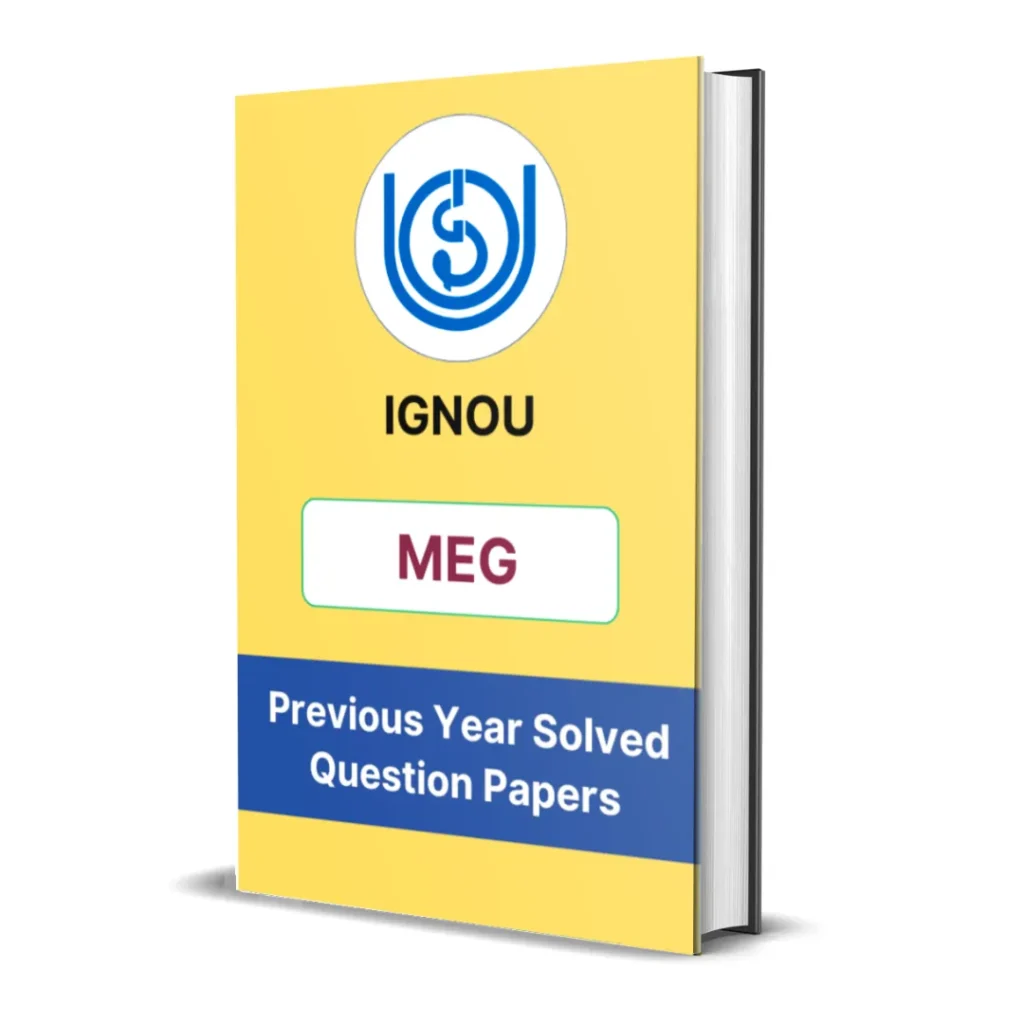MEG-03 Block 6 Summary | Joseph Conrad: Heart of darkness
- Last Updated On August 13, 2025
Table of Contents
Here you will get the detailed summary of IGNOU MEG 3 Block 6 – Joseph Conrad: Heart of darkness.
We have provided the summary of all units starting from unit 1 to unit 5.

Introduction
Block 6 of the IGNOU MEG-3 course centers on Joseph Conrad’s Heart of Darkness, a complex and provocative novella that explores the psychological, political, and moral dimensions of European imperialism in Africa. This block contains five interconnected units, examining the text through historical context, literary techniques, and critical lenses including race, empire, and gender. The block also emphasizes the novella’s continuing relevance in postcolonial discussions and modern literary theory.

Unit 1 – His Story and History
This unit sets the stage by discussing the historical context of Conrad’s novella and its autobiographical elements. It emphasizes how Conrad’s own experiences in the Congo Free State in 1890 deeply influenced Heart of Darkness.
The novella is based partly on Conrad’s personal journey up the Congo River as a steamboat captain. The atrocities he witnessed—forced labor, violence, disease, and exploitation under the guise of civilizing missions—form the core backdrop of the story. However, Conrad does not merely write a personal or historical account. He transforms these experiences into a symbolic narrative that critiques the dehumanizing effects of imperialism and questions the moral authority of European colonial powers.
The unit also traces how colonialism in the 19th century was justified through ideas of racial superiority and progress. Conrad’s portrayal of darkness—both literal and metaphorical—functions as a commentary on the savagery beneath the surface of Western civilization.

Unit 2 – Literary Analysis I
This unit provides the first level of literary interpretation, focusing on the novella’s structure, narrative style, and use of imagery.
The narrative frame is crucial. The story is told by Marlow, a sailor recounting his experiences in Africa to unnamed listeners aboard a boat on the Thames. This frame narrative introduces themes of storytelling, memory, and subjectivity. Marlow’s reliability as a narrator is also questioned—he often reflects more on the moral and philosophical ambiguities of his journey than on objective facts.
Symbolism and imagery play a central role. The river, the jungle, the fog, and above all, darkness, become key symbols. Darkness represents not only the African continent as imagined by colonial Europe but also the moral corruption and ambiguity within European civilization itself.
The unit emphasizes that Conrad’s prose style—dense, ambiguous, and richly metaphorical—requires careful reading. The lack of clear resolution or moral clarity is intentional, leaving the reader in a state of ethical discomfort.
Unit 3 – Literary Analysis II
This unit deepens the analysis by focusing on thematic elements and psychological dimensions of the novella.
One major theme is the thin veneer of civilization. The story exposes how quickly European characters abandon their civilized values when isolated from their societal norms. Kurtz, the enigmatic ivory trader, is the most striking example. Once an idealistic agent of progress, he becomes consumed by greed, power, and madness in the African interior.
Another theme is the failure of language. Words often break down in the face of horror and confusion. Marlow frequently admits that he cannot fully explain what he saw or felt, reinforcing the idea that some experiences defy rational explanation.
The unit also highlights existential themes: the confrontation with the void, the loss of meaning, and the psychological descent into chaos. Marlow’s journey becomes not only geographical but spiritual and philosophical, reflecting a modernist skepticism about truth and morality.

Unit 4 – Race, Empire, Gender in Heart of Darkness
This unit offers a critical reading through the lenses of postcolonialism, race, and gender.
Chinua Achebe’s famous critique is central to this discussion. Achebe argued that Heart of Darkness dehumanizes Africans by presenting them as voiceless, faceless symbols of savagery rather than as people. The novella, he claimed, reflects a deeply embedded Eurocentric and racist worldview.
However, other critics argue that Conrad is not endorsing racism but exposing the hypocrisy of European colonialism. The very horror and absurdity Marlow describes are meant to critique the imperial project.
The unit also examines gender dynamics. Women are largely absent or idealized in the novella, such as Kurtz’s Intended or Marlow’s aunt. This marginalization reflects the gender norms of Conrad’s time but also invites feminist interpretations that question the gendered construction of knowledge and power.
Conrad’s work is thus ambivalent and contested: it can be read both as a critique of empire and as a product of imperial ideology.
Unit 5 – The Lengthening Shadow
The final unit focuses on the legacy and influence of Heart of Darkness, exploring how its themes continue to resonate in modern literature, film, and theory.
The unit traces how the novella has inspired countless adaptations and responses, including Francis Ford Coppola’s Apocalypse Now, which relocates the story to the Vietnam War, and literary responses from postcolonial authors like Chinua Achebe and Ngũgĩ wa Thiong’o.
Heart of Darkness is also influential in literary theory, particularly in discussions of:
-
Modernism: With its fragmented structure, unreliable narration, and psychological depth.
-
Postcolonialism: As a key text in debates on empire, race, and representation.
-
Existentialism and Nihilism: Reflecting a world without clear moral boundaries or truths.
This unit encourages readers to see the novella not as a closed text with fixed meanings, but as a living document that reflects and challenges the ideologies of both its time and ours.